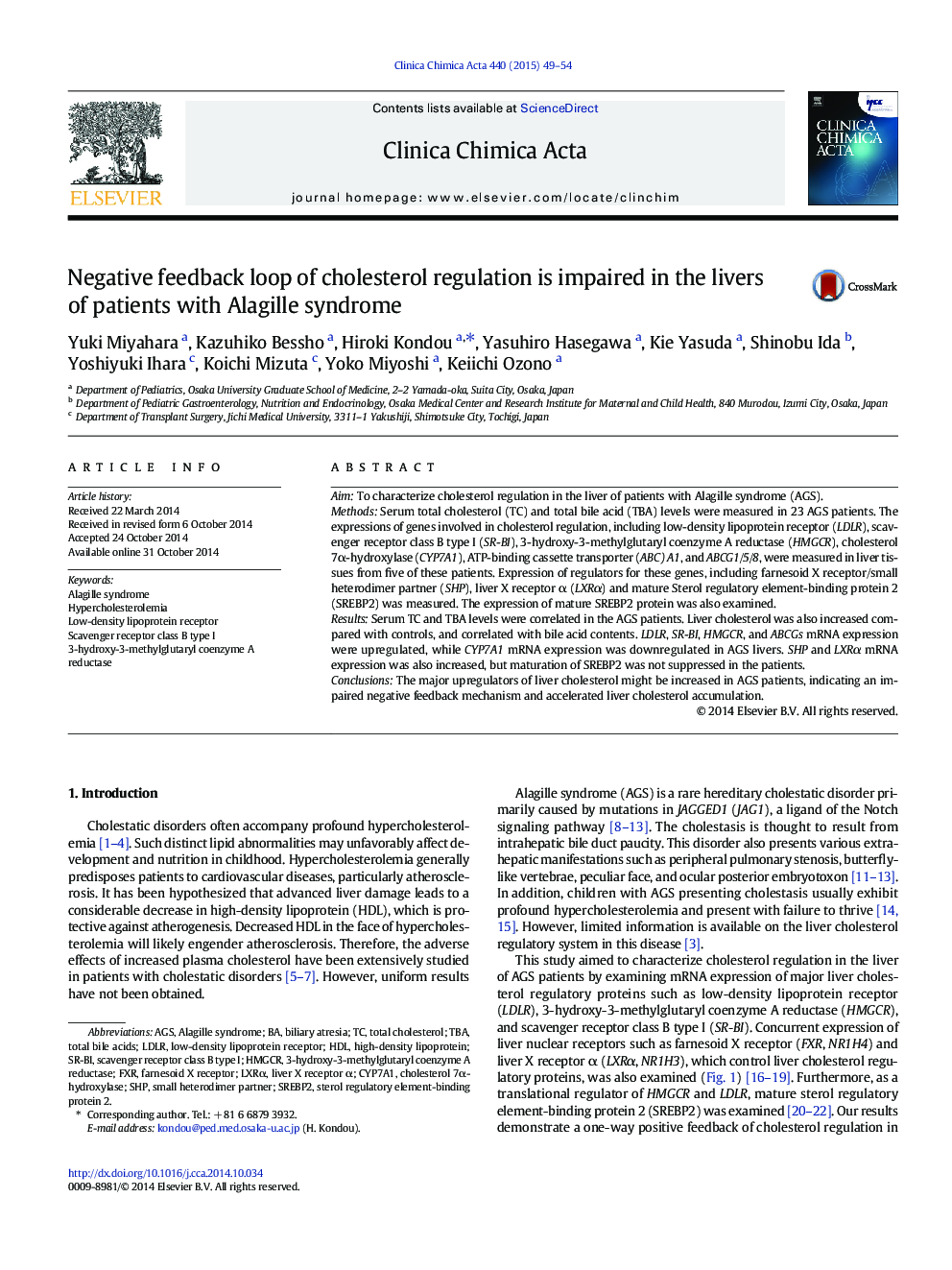| Article ID | Journal | Published Year | Pages | File Type |
|---|---|---|---|---|
| 1965301 | Clinica Chimica Acta | 2015 | 6 Pages |
•Liver cholesterol content of patients with Alagille syndrome (AGS) was increased.•Upregulation of LDLR, SR-BI and HMGCR might contribute to high cholesterol content.•Maturation of SREBP2 was not suppressed despite high cholesterol content in AGS.•Negative feed-back mechanism of cholesterol regulation was impaired in AGS children.
AimTo characterize cholesterol regulation in the liver of patients with Alagille syndrome (AGS).MethodsSerum total cholesterol (TC) and total bile acid (TBA) levels were measured in 23 AGS patients. The expressions of genes involved in cholesterol regulation, including low-density lipoprotein receptor (LDLR), scavenger receptor class B type I (SR-BI), 3-hydroxy-3-methylglutaryl coenzyme A reductase (HMGCR), cholesterol 7α-hydroxylase (CYP7A1), ATP-binding cassette transporter (ABC) A1, and ABCG1/5/8, were measured in liver tissues from five of these patients. Expression of regulators for these genes, including farnesoid X receptor/small heterodimer partner (SHP), liver X receptor α (LXRα) and mature Sterol regulatory element-binding protein 2 (SREBP2) was measured. The expression of mature SREBP2 protein was also examined.ResultsSerum TC and TBA levels were correlated in the AGS patients. Liver cholesterol was also increased compared with controls, and correlated with bile acid contents. LDLR, SR-BI, HMGCR, and ABCGs mRNA expression were upregulated, while CYP7A1 mRNA expression was downregulated in AGS livers. SHP and LXRα mRNA expression was also increased, but maturation of SREBP2 was not suppressed in the patients.ConclusionsThe major upregulators of liver cholesterol might be increased in AGS patients, indicating an impaired negative feedback mechanism and accelerated liver cholesterol accumulation.
